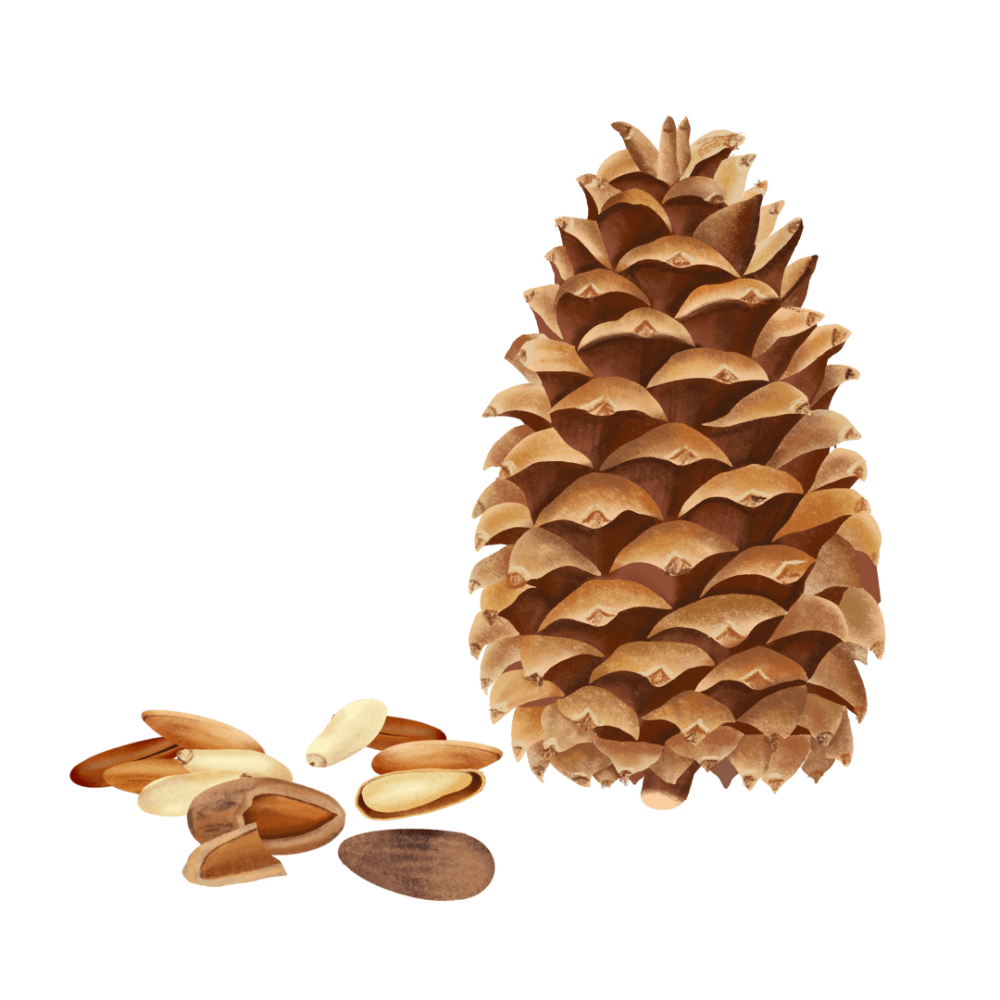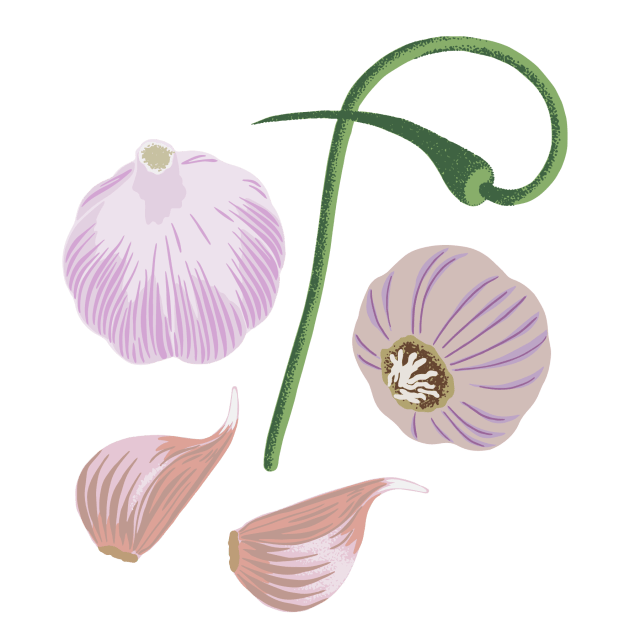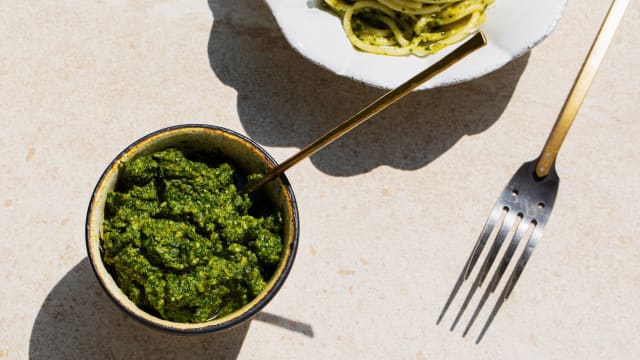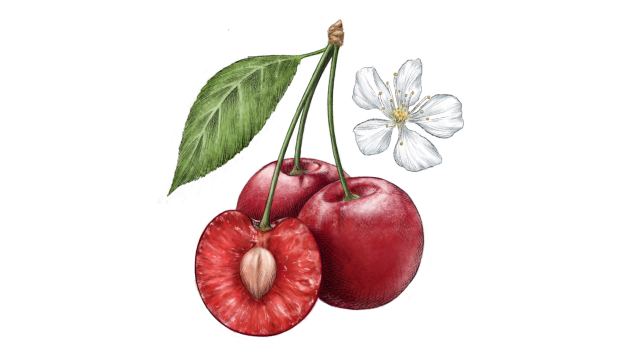Pine Nut

Latin name: Pinus spp.
Other names: pignola, piñon
Uses: nut
What is a pine nut?
Pine nuts are the seeds of a pine tree, found in the scales of pinecones (or in bags at the grocery store, depending). European pine nuts tend to be longer and more slender than the fatter Asian article, but American pine nuts are larger than both and easier to shell. Like other tree nuts, pine nuts can trigger allergic reactions in people who have nut allergies.
Why are pine nuts healthy?
Pine nuts are high in protein, iron, magnesium, and vitamins E and K. They’re also a great source of heart-healthy polyunsaturated fats that can aid in lowering “bad” cholesterol and the essential omega-3 fatty acids that can help slow cognitive decline and promote heart health.
What do pine nuts taste like?
Pine nuts are buttery and slightly sweet, sort of like cashews or macadamia nuts. The flavor has a faintly pine-y, vanilla undertone. This makes sense considering that another pine species, Jeffrey pine (P. jeffreyi), is known to have needles that smell like vanilla or butterscotch (though this species doesn’t produce nuts worth harvesting). They have a soft/oily texture like sunflower seed kernels.
How do I prepare pine nuts?
Pine nuts will always taste best if you lightly toast them before use. Add them to baked goods, salads, and tagines. They’re probably best known for adding richness to pesto.
What do pine nuts pair well with?
Pine nuts are spectacular with basil, garlic, parmesan cheese, and olive oil (hence, pesto) — and are wonderful in baked goods like baklava and pignoli cookies. They love other Mediterranean ingredients as well, from rose water, honey, dates, and figs to eggplant and red peppers. In Korea they’re often used with honey, as well as in creamy rice porridges (jatjuk) and summery white kimchi.
Where do pine nuts grow?
Pine nuts come from pines that grow throughout the Northern Hemisphere, across Europe, Asia, and the American west and Southwest, where they’ve been traditionally harvested by Indigenous people for millennia. In North American they typically come from three different pinyon pine species, but most of the commercially available pine nuts sold in the United States and Europe are from Korean pine.
How to buy pine nuts:
Pine nuts are usually sold shelled, either raw or roasted. They can be a bit pricey, so check the expiration date to make sure you’re getting a fresh batch. Stash them in the refrigerator or freezer to keep them from going rancid.
Fun pine nut fact:
Beware the dreaded pine mouth! Also known as pine nut syndrome (PNS), this condition sporadically arises in some people after eating pine nuts from Chinese white pine (Pinus armandii), causing a bitter metallic taste that can linger for weeks. Scientists don’t exactly know what causes it, but if you carry genes for PTC tasting (detecting the bitterness in phenylthiocarbamide, the ability of which is a classic human genome marker, like attached ear lobes or left handedness) from both parents, there seems to be a higher chance of it happening to you.





